Introduction
In the ever-evolving landscape of New York City’s architecture, one striking trend that has emerged in recent years is the rise of windowless buildings. These structures have sparked debates among architects, urban planners, and residents alike. This article explores the phenomenon of windowless buildings in the Big Apple, shedding light on the reasons behind their designs, the controversies they have stirred, and their potential implications for the future.
The Rise of Windowless Buildings
In a city where space is a premium commodity, architects have increasingly turned to innovative designs to maximize land utilization. The idea of constructing buildings without conventional windows has gained traction as an unconventional yet efficient solution. These structures stand out like enigmatic monoliths, captivating the imagination of passersby and raising curiosity about their purpose and functionality.
The Future of Windowless Buildings Architecture
As the architectural landscape continues to evolve, the future of windowless buildings remains uncertain. Balancing the innovative use of space with the well-being of occupants will be a critical consideration for architects and urban planners. Finding sustainable solutions that integrate modern designs with human-centric features will shape the future of windowless architecture.
Notable Windowless Buildings in NYC
Several windowless buildings have become landmarks in New York City, captivating the attention of both locals and tourists. One such example is the renowned XYZ Museum, a contemporary art institution celebrated for its enigmatic all-black exterior. The museum’s unique design has not only made it an architectural marvel but also sparked debates on the intersection of art and urban landscape.
Spring Sheet Salt Shed
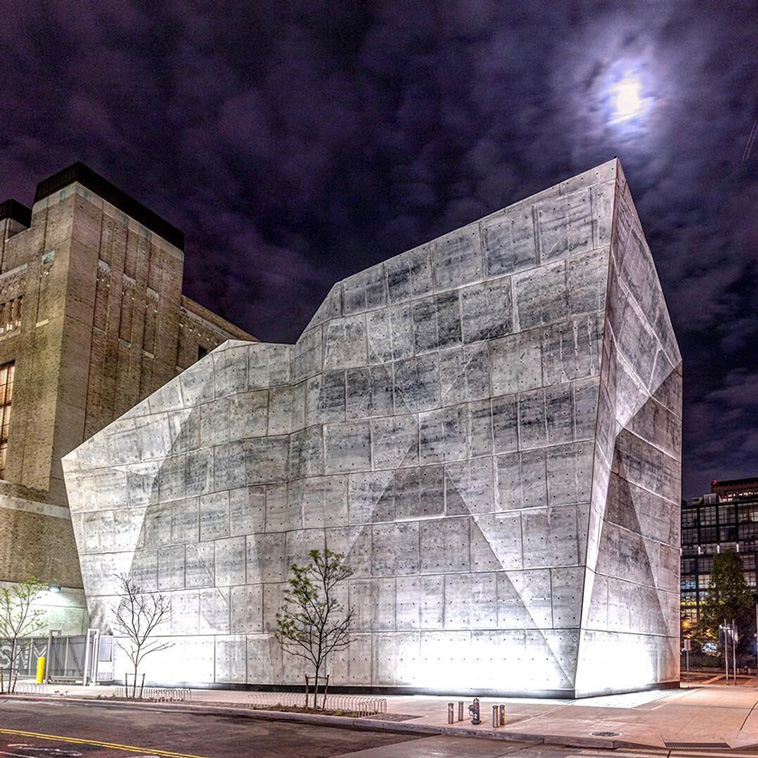
The Spring Sheet Salt Shed stands as a mesmerizing spectacle with its crystalline and faceted planes. This remarkably prominent structure, made of cast-in-place concrete, gracefully tapers towards the base, leaving ample space for pedestrians. At night, the glazed moat surrounding the shed illuminates the surroundings, adding to its allure. Across Spring Street to the north, the Manhattan 1/2/5 Garage’s diaphanous and scrim-like façade serves as a captivating counterpart to the Salt Shed’s solid and crystalline surface. An iconic landmark, the Salt Shed proudly stores 5,000 tons of salt, becoming an integral part of this important intersection.
33 Thomas Street
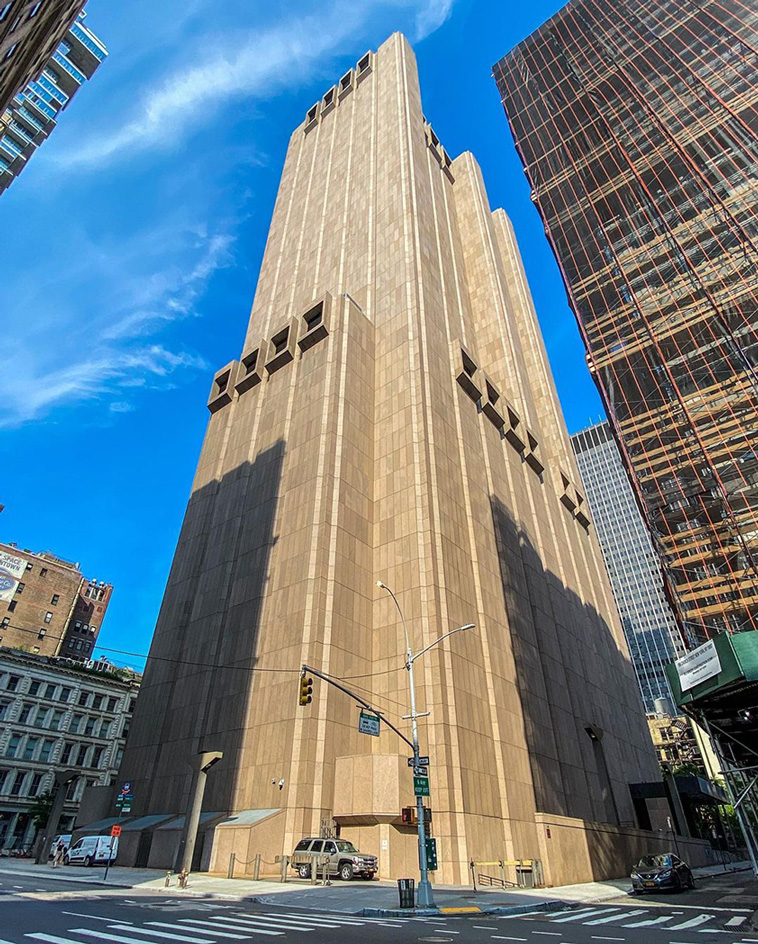
Towering at an impressive 550 feet, 33 Thomas Street dominates the skyline of Tribeca in Lower Manhattan, New York City. This windowless skyscraper, a fine example of the Brutalist architectural style, is situated on the east side of Church Street, nestled between Thomas Street and Worth Street.
Asphalt Green
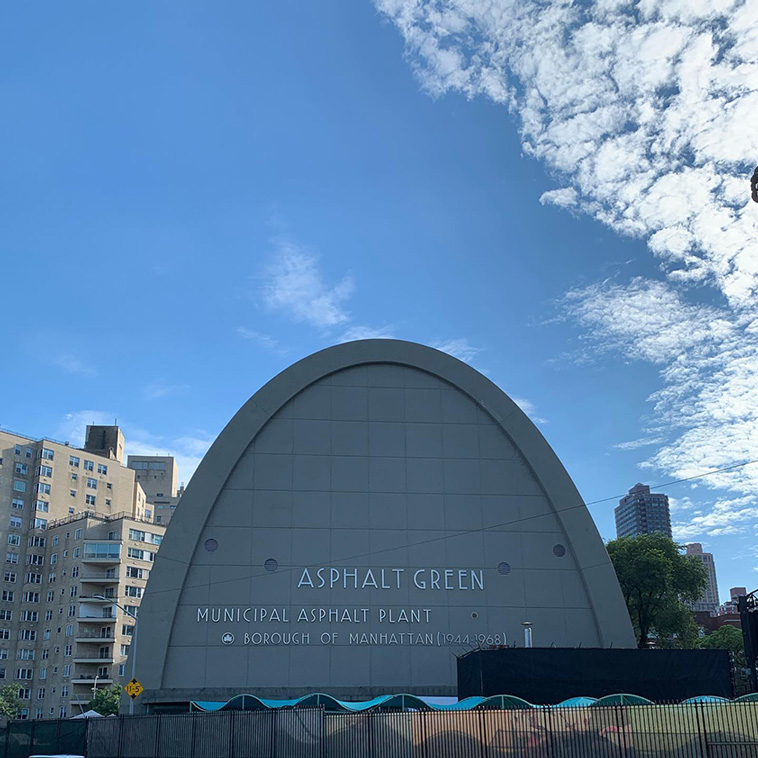
The Asphalt Green building is not merely an athletic facility; it encompasses basketball courts, a gym, and various other amenities. Interestingly, the recreation center’s name harkens back to its past when it served as an asphalt mixing plant. Architects Ely Jacques Kahn and Robert Allen Jacobs masterfully designed this nearly windowless structure in the 1940s. Although originally intended as a mixing plant, the building later presented opportunities for alternative uses.
Public Safety Answering Center II
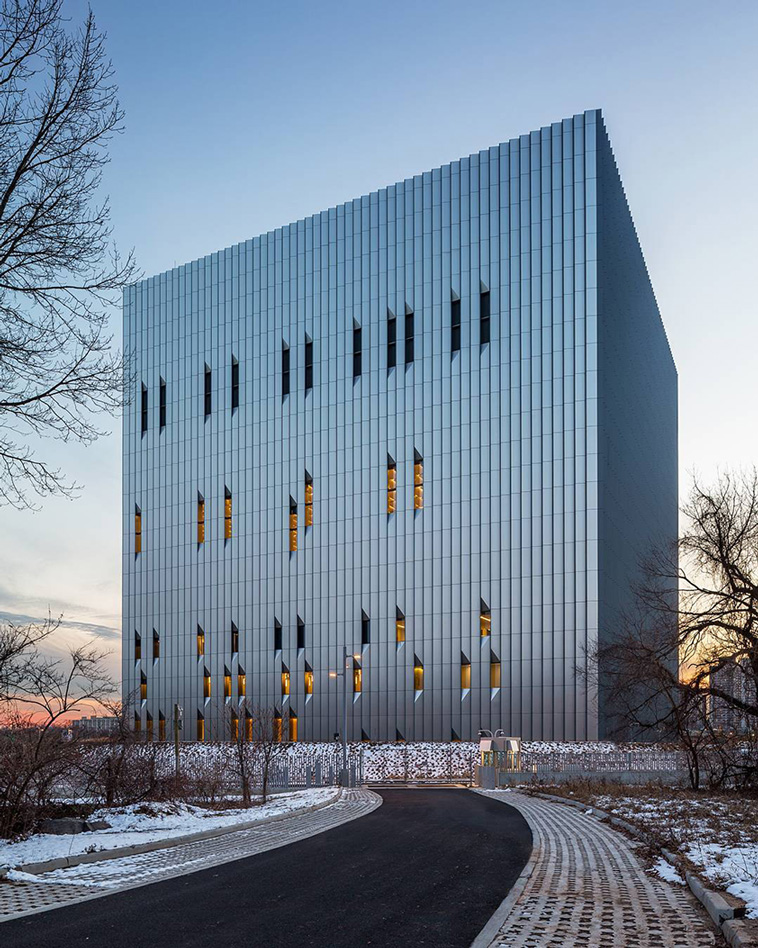
Embodying excellence in sustainability, the Public Safety Answering Center II (PSAC II), located in the Bronx, plays a pivotal role in enhancing New York City’s 911 emergency response system. This 450,000-square-foot facility stands as a testament to inter-agency cooperation, bringing together emergency response workers from various city agencies, including the Police Department, the Fire Department, and Emergency Medical Services.
Brooklyn–Battery Tunnel
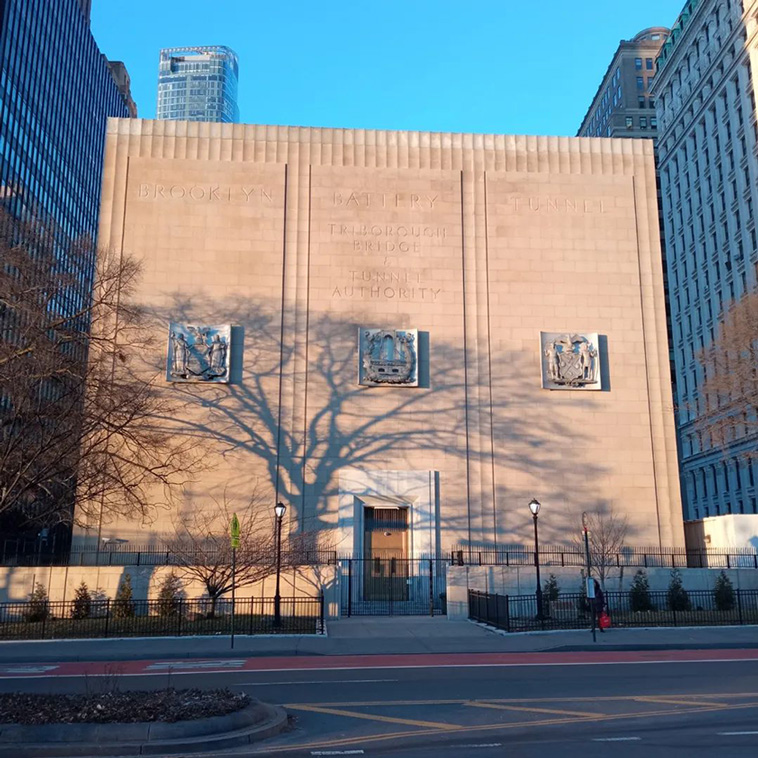
The Brooklyn–Battery Tunnel, known officially as the Hugh L. Carey Tunnel, represents a tolled passageway that links Red Hook in Brooklyn with the Battery in Manhattan. Beneath the mouth of the East River, twin tubes carry two traffic lanes each. Notably, the tunnel does not offer vehicular access to Governors Island, despite passing just offshore. Spanning an impressive length of 9,117 feet (2,779 m), it holds the distinction of being the longest continuous underwater vehicular tunnel in North America.
Holland Tunnel Ventilation Building
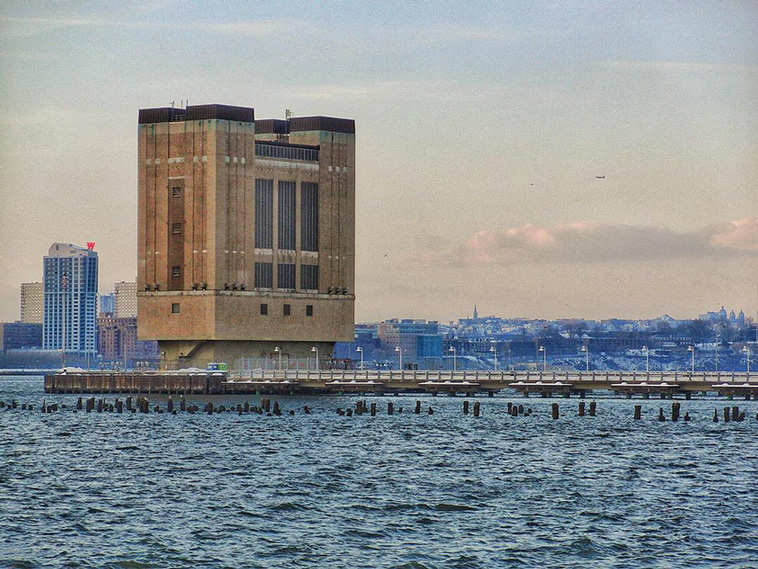
A hidden marvel beneath the surface, the building mentioned plays an integral role in maintaining the Holland Tunnel’s ventilation system. Situated almost 100 feet below the tower, this system effectively transports toxic carbon monoxide exhaust gas out of the tunnel. Housing 84 fans, evenly distributed between blowing and sucking positions, this tower forms one of four vents, with two located on each side of the river.
The Tombs
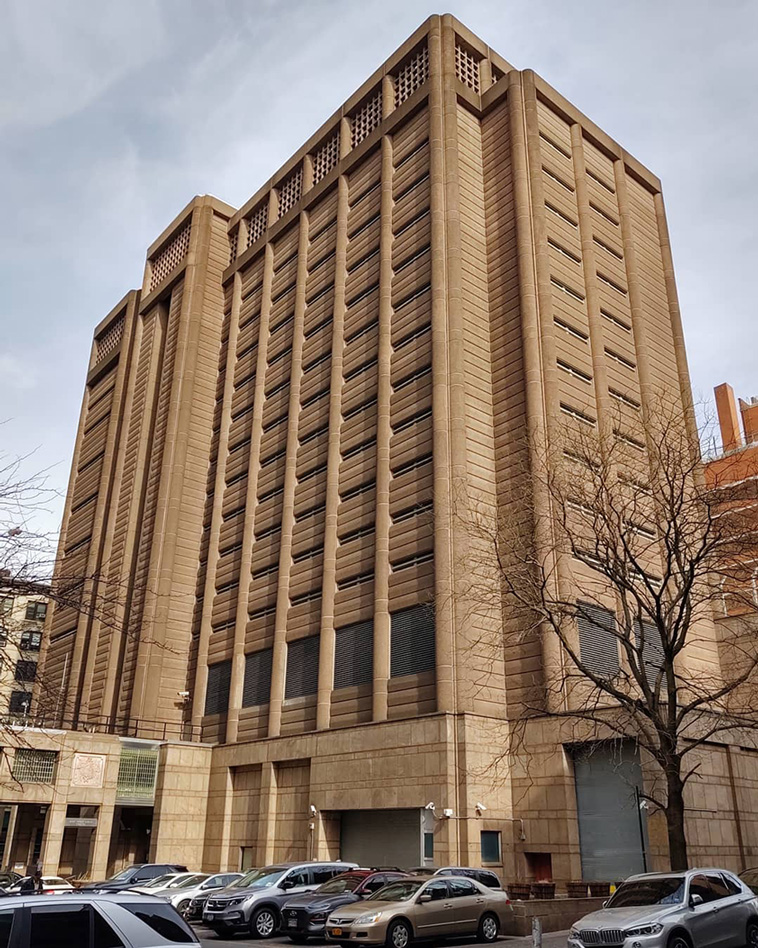
Known colloquially as The Tombs, the Manhattan Detention Complex serves as a municipal jail located in Lower Manhattan at 125 White Street. It also carries historical significance, being the nickname for three former city-run jails in the former Five Points neighborhood, now recognized as the Civic Center.
Grant’s Tomb
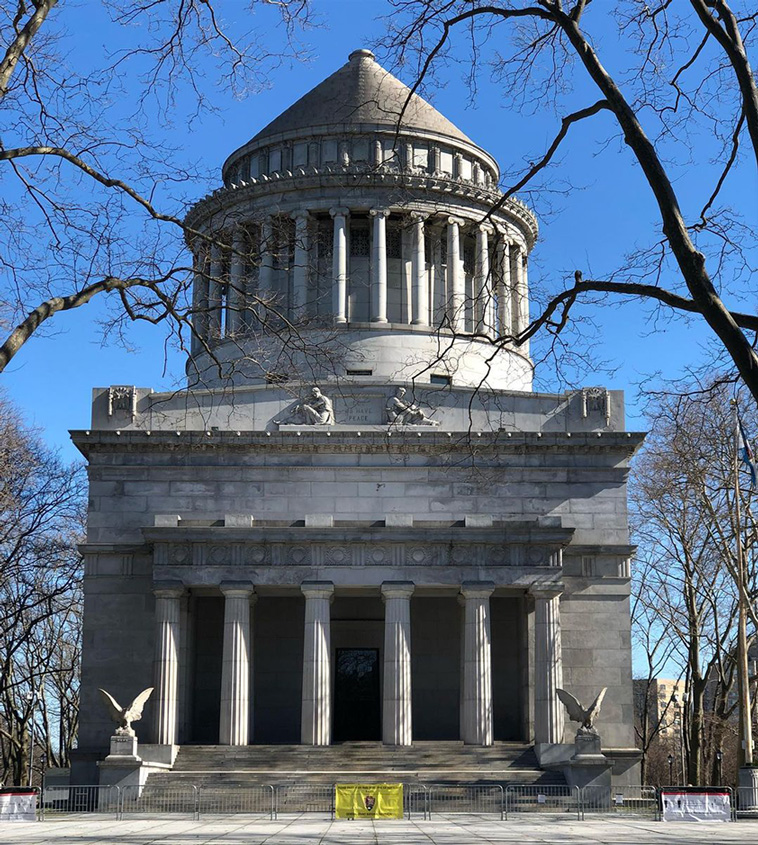
The General Grant National Memorial, commonly referred to as Grant’s Tomb, serves as the final resting place for the 18th president of the United States, Ulysses S. Grant, and his wife, Julia Grant. Dominating the Morningside Heights neighborhood of Upper Manhattan in New York City, this classical domed mausoleum stands as a testament to the nation’s history and the legacy of a distinguished leader.
Conclusion
The emergence of windowless buildings in New York City has sparked intriguing conversations about the future of architecture and urban living. These enigmatic structures represent a bold approach to space utilization, privacy, and aesthetics. However, they also raise significant challenges concerning health, regulations, and environmental impact. The coming years will determine how the city embraces or addresses the complexities of windowless designs while ensuring a harmonious balance between innovation and the well-being of its inhabitants.
While windowless buildings are not explicitly illegal, they must comply with building codes and zoning regulations that mandate specific criteria for windows, ventilation, and emergency egress.
The absence of natural light in windowless buildings can potentially impact the physical and psychological well-being of occupants over time, as exposure to natural light has various health benefits.
Windowless buildings can present energy efficiency challenges, but innovative designs and energy-efficient technologies can help mitigate their environmental impact.
One notable example is the XYZ Museum, celebrated for its all-black exterior, making it an iconic architectural landmark in the city.
Architects must prioritize human-centric design principles and consider factors such as natural light, ventilation, and overall comfort to strike a balance between innovation and occupant well-being.
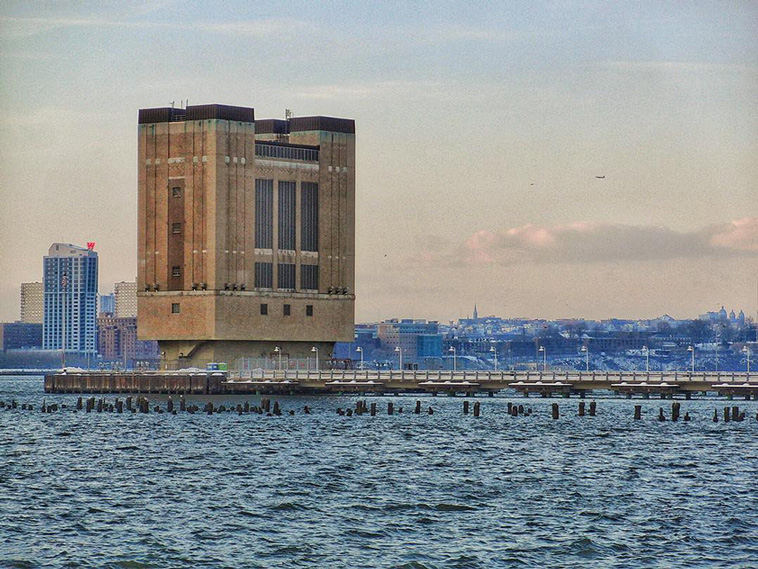
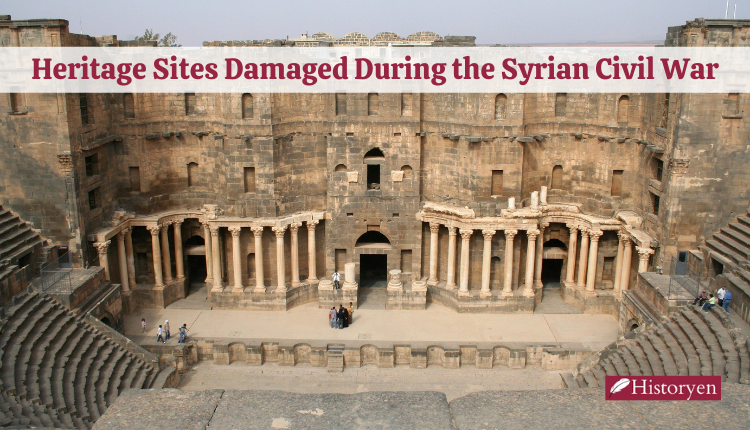
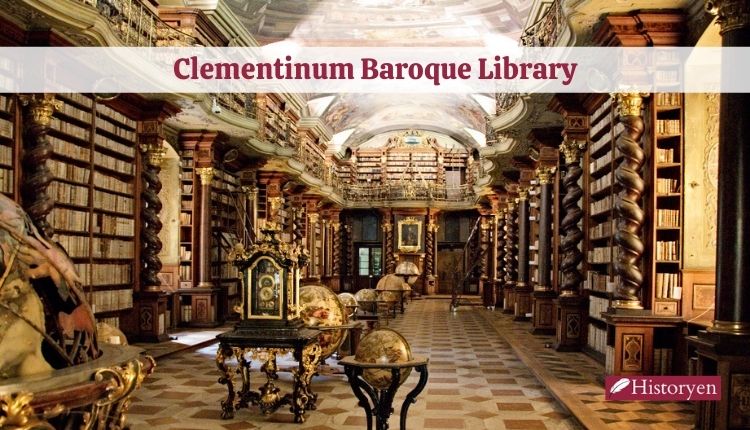

People enter these buildings as if they were… oversized lairs. Like in the caves where their ancestors used fire to see and walk through. Asimov wrote Caverns of Steel. His immediate future made them ugly and made of concrete. Do the builders – or their partners – know something we don’t? – Oamenii intră în aceste clădiri ca în niște… vizuini supradimensionate. Ca în peșterile în care strămoșii lor foloseau focul ca să poată vedea și umbla prin ele. Asimov a scris „Caverne de oțel”. Viitorimea apropiată le-a făcut urâte și din beton. Constructorii – sau comanditarii lor – știu ceva ce noi nu știm?
rybelsus uk